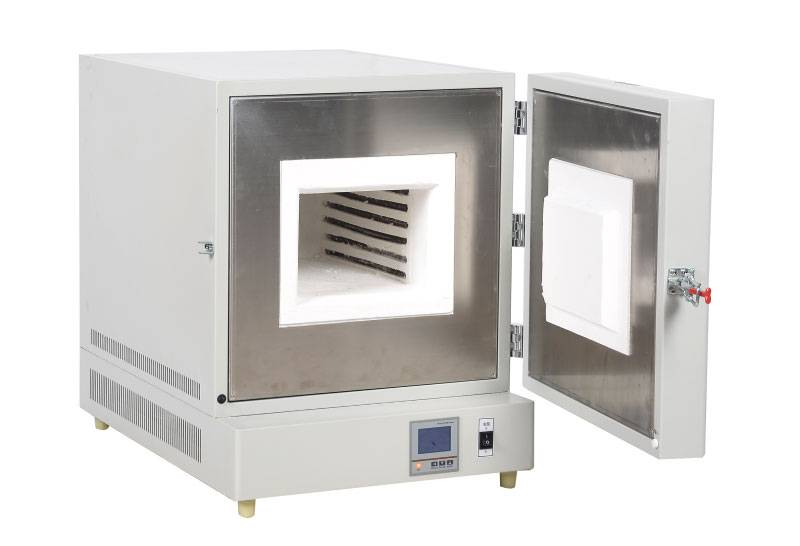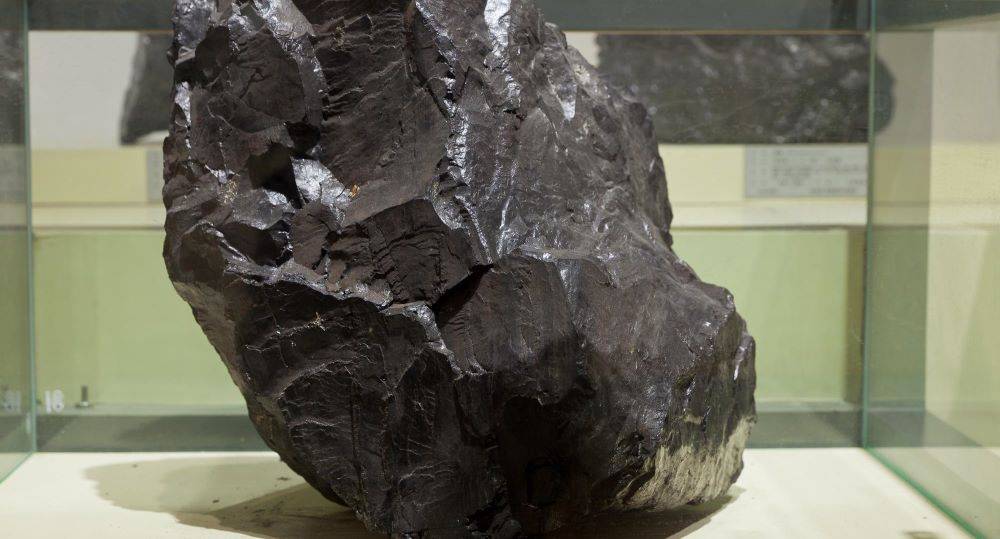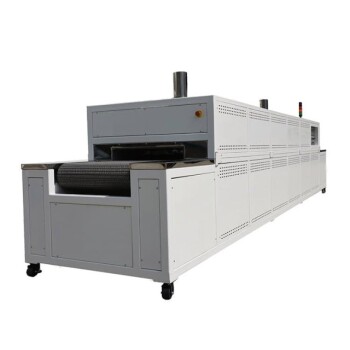Principles and Structure of Muffle Furnaces
Types of Muffle Furnaces
Muffle furnaces in laboratories come in various forms, each distinguished by their unique heating principles and applications. The most common types include electric, microwave, and gas muffle furnaces, each catering to specific needs within the scientific community.
Electric muffle furnaces are highly valued for their versatility in tasks such as molding, melting, drying, and heating materials. Unlike induction furnaces, which rely on electromagnetic fields to heat materials, electric muffle furnaces employ electrically heated refractory elements housed within a solid metal container. This design allows them to operate at higher temperatures and with greater power densities, making them suitable for more demanding applications.
Box-type high-temperature furnaces represent a classic variant of muffle furnaces, often resembling a box in shape. These furnaces offer enhanced thermal insulation and customizable dimensions, typically featuring a square design with a front-opening door. The door design often includes an inner door for improved heat preservation, making box-type furnaces a popular choice in many laboratories.
Thermolyne muffle furnaces are another specialized type, particularly known for their industrial benchtop applications. These furnaces can reach temperatures up to 1200°C, making them ideal for high-temperature processes in industrial settings.
By understanding these different types of muffle furnaces, researchers and laboratories can select the most appropriate equipment to meet their specific needs.

Heating Mechanisms
Muffle furnaces utilize various heating mechanisms to convert electrical energy into thermal energy. The most common types include electrothermal and microwave muffle furnaces, each employing distinct methods to generate heat.
Electrothermal Muffle Furnaces
Electrothermal muffle furnaces generate heat through Joule heating, a process where an electric current passes through a conductor, causing it to heat up due to resistance. This method is highly efficient and widely used in laboratory settings for precise temperature control. The heating elements, typically made of materials like nichrome or kanthal, are designed to withstand high temperatures, ensuring consistent and reliable heat generation.
Microwave Muffle Furnaces
In contrast, microwave muffle furnaces utilize microwaves to convert electrical energy into thermal energy. This process involves the interaction of microwaves with the material inside the furnace, causing molecular agitation that leads to rapid and uniform heating. The advantage of this method lies in its ability to heat materials quickly and uniformly, making it particularly suitable for applications requiring rapid thermal processing.
Both heating mechanisms offer unique benefits, catering to different industrial and research needs. Understanding these principles is crucial for selecting the most appropriate muffle furnace for specific applications.
Main Components
Key components of muffle furnaces are integral to their functionality and efficiency. These components include:
-
Heating Elements: These are crucial for generating the necessary heat within the furnace. They can be made from various materials such as silicon carbide or metal alloys, each offering unique properties like durability and heat resistance.
-
Insulation Materials: High-quality insulation is essential to maintain the internal temperature and prevent heat loss. Common materials include ceramic fibers and refractory bricks, which provide excellent thermal insulation and structural support.
-
Furnace Chamber: This is the core area where the actual heating process takes place. The chamber is typically made from high-temperature alloys or ceramics to withstand extreme conditions and ensure uniform heating.
-
Temperature Control Systems: Advanced control systems are vital for precise temperature regulation. These systems often include digital controllers, thermocouples, and PID (Proportional-Integral-Derivative) controllers to maintain consistent temperatures and automate the heating process.
Each of these components plays a distinct role in ensuring the muffle furnace operates effectively and efficiently, catering to a wide range of industrial and laboratory applications.
Research and Development in Muffle Furnaces
Historical Development
The evolution of muffle furnaces has been marked by significant milestones, particularly in the post-World War II era. During this period, technological advancements revolutionized the industry, with a particular focus on temperature control and automation. These innovations were driven by the need for more precise and efficient heating processes, which were crucial for the burgeoning industrial and scientific sectors.
One of the key breakthroughs was the development of advanced temperature control systems. These systems allowed for more accurate regulation of heating temperatures, which was essential for ensuring consistent results in various applications. Additionally, the integration of automation technologies reduced the need for manual intervention, thereby increasing efficiency and reducing the risk of human error.
Moreover, the post-war period saw a surge in research and development efforts aimed at improving the structural design and energy efficiency of muffle furnaces. This led to the creation of more robust and versatile furnaces that could be adapted to a wide range of industrial and scientific uses. The advancements in these areas not only enhanced the performance of muffle furnaces but also expanded their applications across different fields.
In summary, the post-World War II era was a pivotal time for muffle furnace development, characterized by significant technological innovations that have shaped the modern landscape of heating and processing technologies.
Domestic and International Research
Research in China and abroad has significantly contributed to the advancements in muffle furnace technology. These efforts have primarily focused on three key areas: structural design, temperature uniformity, and energy efficiency.
In terms of structural design, international research has introduced innovative materials and designs that enhance the durability and performance of muffle furnaces. For instance, the use of high-temperature resistant ceramics and advanced insulation materials has improved the overall structural integrity and longevity of these furnaces.
Temperature uniformity has been another focal point of research, particularly in ensuring consistent heating across the entire furnace chamber. Studies have led to the development of sophisticated temperature control systems and improved heating elements that distribute heat more evenly. This has been crucial for applications requiring precise temperature regulation, such as in analytical chemistry and materials synthesis.
Energy efficiency has also seen substantial improvements. Researchers have developed more efficient heating mechanisms and optimized the thermal insulation of furnace components. For example, the integration of energy-saving technologies like regenerative heat exchangers has reduced energy consumption significantly. These advancements not only lower operational costs but also contribute to environmental sustainability by minimizing energy waste.
Overall, the collaborative efforts of domestic and international researchers have paved the way for more advanced, reliable, and efficient muffle furnaces, catering to a wide range of industrial and scientific applications.
Notable Companies
The muffle furnace market is dominated by several key players, each contributing significantly to the technological advancements and quality standards within the industry. Carbolite Gero (UK) stands out for its high-performance muffle furnaces, renowned for their precision and reliability in various laboratory settings. Similarly, Nabertherm (Germany) has established itself as a leader, offering a wide range of muffle furnaces that cater to both industrial and research applications.
In the Asian market, Zhengzhou Coentec Instrument Co., Ltd. (China) has made substantial strides, particularly in the development of cost-effective yet high-quality muffle furnace solutions. These companies not only produce state-of-the-art equipment but also invest heavily in research and development, ensuring their products remain at the forefront of technological innovation.
| Company Name | Country | Key Contributions |
|---|---|---|
| Carbolite Gero | UK | High-performance, precision muffle furnaces |
| Nabertherm | Germany | Wide range of muffle furnaces for diverse applications |
| Zhengzhou Coentec Instrument | China | Cost-effective, high-quality muffle furnace solutions |
These notable companies continue to shape the future of muffle furnace technology, driving improvements in efficiency, durability, and user-friendliness.

Applications of Muffle Furnaces
Industrial Uses
Muffle furnaces play a crucial role in various industrial sectors, particularly in thermal processing, workpiece treatment, and materials synthesis. These furnaces are indispensable in industries such as cement and building materials, where they facilitate the high-temperature treatment of raw materials and finished products.
In the cement industry, muffle furnaces are used for calcining raw materials, a process that transforms raw calcium carbonate into lime, a key component in cement production. This thermal processing step is essential for ensuring the quality and consistency of the final cement product. Similarly, in the building materials sector, these furnaces are employed for the thermal treatment of ceramics, bricks, and other construction materials, enhancing their durability and structural integrity.
Moreover, muffle furnaces are vital in the synthesis of advanced materials, such as ceramics and composites, which require precise temperature control and uniform heating. The ability of these furnaces to maintain high temperatures while isolating the heating process from the environment makes them ideal for these applications, ensuring that the materials undergo the necessary chemical and physical changes without contamination.
In summary, muffle furnaces are integral to the industrial processes in cement and building materials, contributing significantly to the quality and efficiency of thermal treatments and materials synthesis.
Medical and Analytical Chemistry
Muffle furnaces play a pivotal role in the field of medical and analytical chemistry, serving a multitude of critical applications. These furnaces are indispensable in drug inspection processes, where they facilitate the precise heating and processing of pharmaceutical samples to ensure their purity and efficacy. Additionally, muffle furnaces are utilized in sample pretreatment, a crucial step in preparing samples for subsequent analytical procedures, thereby enhancing the accuracy and reliability of results.
In environmental analysis, muffle furnaces are employed to analyze water and air samples, aiding in the detection of contaminants and pollutants. This application is vital for maintaining environmental health and ensuring compliance with regulatory standards. Furthermore, these furnaces are essential in oil quality analysis, where they help determine the composition and properties of oils, which is crucial for industries such as petroleum and automotive.
The versatility and precision of muffle furnaces make them an invaluable tool in these analytical and medical chemistry applications, contributing significantly to advancements in these fields.
Coal Analysis
Coal analysis is a critical process in assessing the quality and suitability of coal for various industrial applications. This analysis primarily focuses on determining key parameters such as moisture, ash, volatile matter, and elemental composition. Each of these parameters provides valuable insights into the coal's behavior under different conditions and its overall utility in industrial processes.
-
Moisture Content: This is a measure of the water present in the coal, which can significantly affect its heating value and handling properties. High moisture content can lead to inefficiencies in combustion and transportation.
-
Ash Content: Ash is the non-combustible residue left after coal combustion. High ash content can reduce the thermal efficiency of coal and increase the cost of ash disposal.
-
Volatile Matter: This refers to the combustible gases released during the heating of coal. The volatile matter content influences the coal's ignition and burning characteristics, affecting combustion efficiency and environmental emissions.
-
Elemental Analysis: This involves determining the concentrations of elements such as carbon, hydrogen, nitrogen, sulfur, and oxygen in the coal. These elements play a crucial role in understanding the coal's chemical composition and its environmental impact.

The use of muffle furnaces in coal analysis is paramount due to their precise temperature control and uniform heating capabilities. These furnaces allow for accurate and reproducible results, which are essential for industries relying on coal as a primary energy source.
Future Prospects
Customization and Innovation
The future of muffle furnace technology is poised to be marked by a profound shift towards personalized, intelligent, and energy-efficient solutions. These advancements are not merely incremental but represent a paradigm shift in how muffle furnaces are designed and utilized across various industries.
Personalized Solutions
Personalization will be a key driver, allowing muffle furnaces to be tailored to the unique requirements of different sectors. For instance, in the medical field, furnaces might be optimized for precise temperature control and minimal contamination, essential for drug inspection and sample pretreatment. In contrast, industrial applications may demand robust designs capable of handling high-throughput and extreme conditions.
Intelligent Automation
Intelligence in muffle furnaces will be another significant trend, leveraging advanced automation and AI technologies. These intelligent systems will offer features such as predictive maintenance, real-time monitoring, and adaptive control mechanisms. For example, an AI-driven muffle furnace could autonomously adjust its heating profile based on the material being processed, ensuring optimal results and minimizing energy waste.
Energy Efficiency
Energy efficiency remains a critical focus, particularly in light of growing environmental concerns and regulatory pressures. Future muffle furnaces will incorporate cutting-edge insulation materials and heating elements, reducing energy consumption without compromising performance. Innovations in thermal management and waste heat recovery systems will further enhance their eco-friendliness.
In summary, the future of muffle furnaces is set to be characterized by a blend of customization, intelligence, and energy efficiency, addressing the diverse and evolving needs of industries worldwide.
Enhanced User Experience
Enhancing the user experience in muffle furnace technology involves a multifaceted approach that prioritizes safety, operational efficiency, and seamless integration with analytical instruments. These enhancements are designed to not only optimize performance but also to make the equipment more user-friendly and adaptable to various industrial needs.
Safety Enhancements
Safety remains a paramount concern in laboratory and industrial settings. Modern muffle furnaces are equipped with advanced safety mechanisms, including automated shut-off features, real-time temperature monitoring, and robust insulation materials that minimize the risk of thermal accidents. These features ensure that users can operate the furnaces with confidence, knowing that their safety is prioritized.
Operational Efficiency
Efficiency improvements focus on reducing energy consumption and increasing the speed and precision of heating processes. Innovations such as smart temperature control systems and energy-efficient heating elements contribute to quicker heating cycles and more accurate temperature regulation. This not only saves time but also reduces operational costs, making muffle furnaces more economical to use.
Heating Uniformity
Achieving uniform heating across the furnace chamber is crucial for consistent results in materials processing and analysis. New designs incorporate advanced thermal distribution systems that ensure even heat distribution, eliminating hotspots and cold spots. This uniformity is essential for tasks such as annealing, sintering, and chemical reactions, where precise temperature control is necessary.
Integration with Analytical Instruments
The integration of muffle furnaces with analytical instruments enhances their utility in scientific research and industrial applications. For instance, interfacing with spectrometers, chromatographs, and other analytical tools allows for real-time data collection and analysis. This integration streamlines workflows, providing researchers and technicians with comprehensive data sets that can be analyzed immediately, thereby accelerating the pace of experimentation and innovation.
By focusing on these key areas, the user experience with muffle furnaces is significantly enhanced, making them more versatile, reliable, and efficient tools in various industries.
Related Products
- 1200℃ Muffle Furnace Oven for Laboratory
- 1700℃ Muffle Oven Furnace for Laboratory
- 1400℃ Muffle Oven Furnace for Laboratory
- 1800℃ Muffle Oven Furnace for Laboratory
- 1200℃ Controlled Atmosphere Furnace Nitrogen Inert Atmosphere Furnace
Related Articles
- How to Choose Right Muffle Furnace for Your Laboratory?
- Advanced Laboratory Furnaces: Box, Muffle, and Tube Options for High-Temperature Applications
- Enhancing Dental Work with a High-Quality Dental Furnace
- Comparing Laboratory Furnace Features and Specifications: A Guide
- How to Choose the Best Porcelain Furnace Dental















